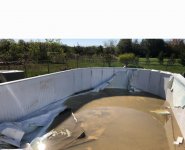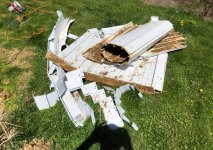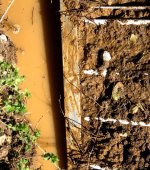I bought a house last year with an older 24’ round AGP. It was built in the summer of 2001, and it’s now about to enter its 23rd season. I noticed some rust under the return and the skimmer last year when I was inspecting it, but I didn’t think much of it so I put it off. I’m now getting close to opening the pool, and I figure that now is a good time to try to remove the rust and apply a rust inhibitor.
Before I do that, though, I thought it would be a good idea to solicit advice from pool owners with some experience under their belts since I’m pretty new to the game. I’ve attached photos of the rust. Does this look recoverable? My plan was to sand down the rust, then apply a clear Rust-Oleum spray to prevent the rust from spreading. I might repeat the process every year or so depending on its efficacy.
I found a forum post that has me a little worried:
Rusted wall
The rust that OP had on their pool was described as a death knell by fellow forum members, and failure all but inevitable. Whereas OP’s rust spot was actively weeping, though, mine seem to be bone-dry. My rust also appears to be on the surface, as though there were leaks coming from the return and skimmer sometime in the past. The liner was replaced last year by the previous owner, though, so I’m hoping those leaks will be gone.
What are your thoughts? Can I repair this rust and inhibit its spread?
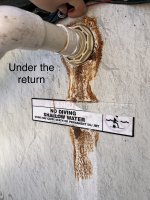
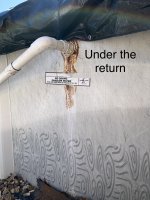

Before I do that, though, I thought it would be a good idea to solicit advice from pool owners with some experience under their belts since I’m pretty new to the game. I’ve attached photos of the rust. Does this look recoverable? My plan was to sand down the rust, then apply a clear Rust-Oleum spray to prevent the rust from spreading. I might repeat the process every year or so depending on its efficacy.
I found a forum post that has me a little worried:
Rusted wall
The rust that OP had on their pool was described as a death knell by fellow forum members, and failure all but inevitable. Whereas OP’s rust spot was actively weeping, though, mine seem to be bone-dry. My rust also appears to be on the surface, as though there were leaks coming from the return and skimmer sometime in the past. The liner was replaced last year by the previous owner, though, so I’m hoping those leaks will be gone.
What are your thoughts? Can I repair this rust and inhibit its spread?



Last edited by a moderator:



